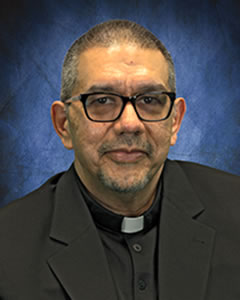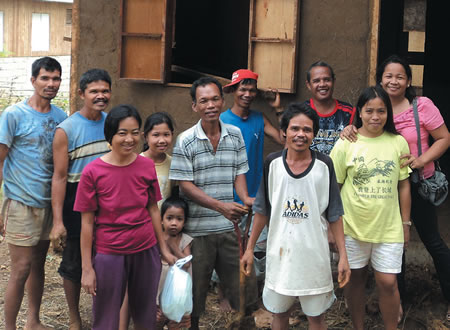
From the Director
As a child, my image of the faces of mission were predominantly priests who courageously ventured into unknown territories and established parishes, schools, hospitals and community centers. They engaged with the locals and learned the customs and language. Then there was a smattering of religious Sisters who taught in schools or worked as nurses in hospitals/clinics. At least, that is what I used to believe were the only faces of mission. Today, the faces of mission have expanded to include lay men and women and services beyond the traditional parish model.
 One of the most impressive faces of mission I have encountered was a former Columban lay missionary from Korea, Columba Chang. I first met Columba in 1997 in Manila, Philippines. It was Mission Sunday, and she was to share her missionary vocation in one of the Masses. The Malate Church, which the Columbans have served since the 1929, holds about 1,000 people. It was filled on that day. During the Mass, Columba shared a conversation that she had with her parents while on vacation in Korea. Her parents expressed their great pride in her for being a lay missionary. However, they pointed out that she needs to retire from her mission, come home, get married and start a family. This was a common cultural expectation for women. Columba replied, “No! I cannot because I am already in love!” Surprised, her parents inquired, “With who? What is his name?” Columba firmly stated, “I am in love with the Filipino people! That is why I cannot come home.” The entire assembly in the church stood up and cheered for her. It was a remarkable affirmation of her love for them. I suddenly realized that I couldn’t top that. When she walked out, I looked at her and jokingly said, “You are a politician! If you wanted to be mayor of Malate, you would be elected tonight!” She looked at me and said, “That’s not me!’ True, her sharing was humble sincerity that expressed her missionary vocation. Since then, whenever we encountered each other, we always laugh about that moment.
One of the most impressive faces of mission I have encountered was a former Columban lay missionary from Korea, Columba Chang. I first met Columba in 1997 in Manila, Philippines. It was Mission Sunday, and she was to share her missionary vocation in one of the Masses. The Malate Church, which the Columbans have served since the 1929, holds about 1,000 people. It was filled on that day. During the Mass, Columba shared a conversation that she had with her parents while on vacation in Korea. Her parents expressed their great pride in her for being a lay missionary. However, they pointed out that she needs to retire from her mission, come home, get married and start a family. This was a common cultural expectation for women. Columba replied, “No! I cannot because I am already in love!” Surprised, her parents inquired, “With who? What is his name?” Columba firmly stated, “I am in love with the Filipino people! That is why I cannot come home.” The entire assembly in the church stood up and cheered for her. It was a remarkable affirmation of her love for them. I suddenly realized that I couldn’t top that. When she walked out, I looked at her and jokingly said, “You are a politician! If you wanted to be mayor of Malate, you would be elected tonight!” She looked at me and said, “That’s not me!’ True, her sharing was humble sincerity that expressed her missionary vocation. Since then, whenever we encountered each other, we always laugh about that moment.
I always remember Columba for her missionary commitment to those she was sent to, and her great love for them. Columba showed that a lay missionary can be just as valuable as any priest and religious Sister.
Columba had worked and lived in one of the poorest areas in the Philippines, Smokey Mountain. Smokey Mountain was Manila’s largest dumpsite where the poorest of the poor made their livelihood by picking up garbage. Its name was coined from the smoke caused by the garbage. Later, Columba would work with AIDS patients in Manila. Years later, she switched her mission country to Myanmar but had to leave due to political unrest. After 30 years as a Columban Lay Missionary, Columba left the program to focus on her health in Korea. I always remember Columba for her missionary commitment to those she was sent to, and her great love for them. Columba showed that a lay missionary can be just as valuable as any priest and religious Sister. In this issue, we honor those like Columba who have answered the call to be a missionary be it ordained, religious or lay.